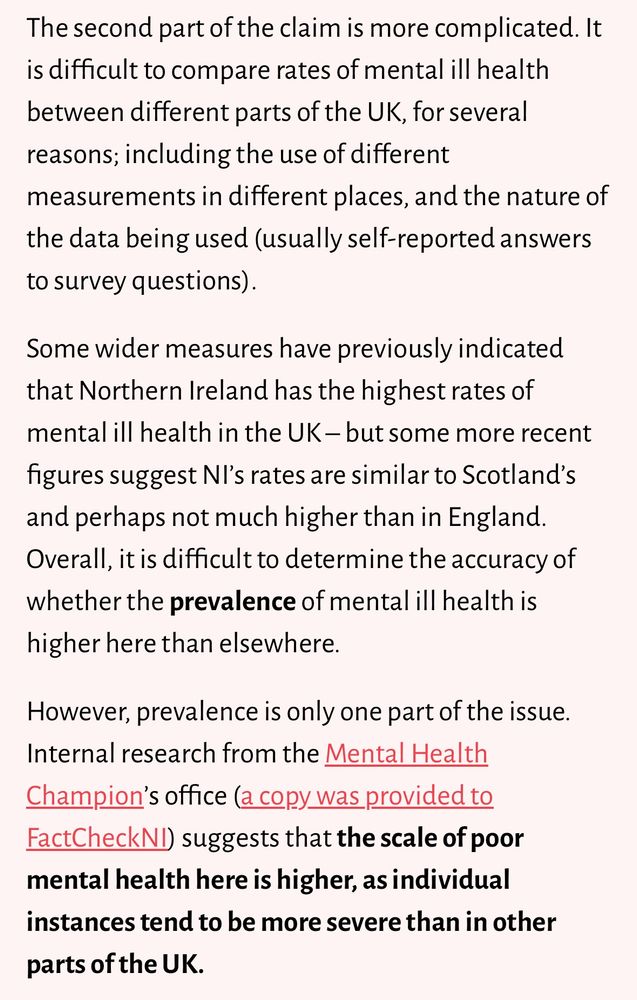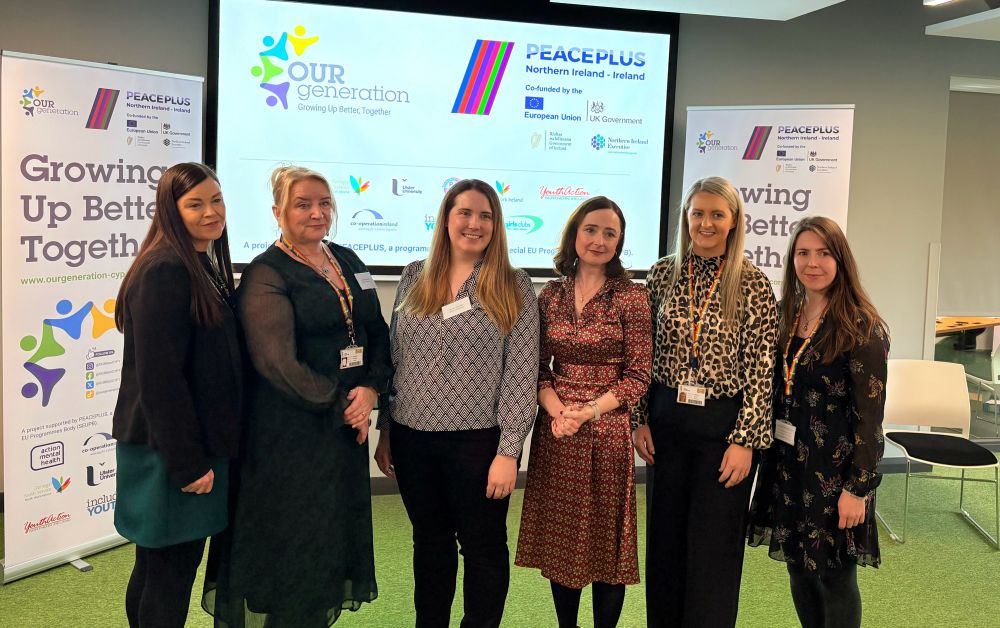
Here’s Minister @AndrewMuirNI giving the keynote speech on the importance of farm safety & mental health awareness 🐷🐐🚜👩🏼🌾🌾🧠

Here’s Minister @AndrewMuirNI giving the keynote speech on the importance of farm safety & mental health awareness 🐷🐐🚜👩🏼🌾🌾🧠
It is difficult to compare regions, but recent figures show that the %s are probably similar.
However there is evidence showing that in NI those with mental ill health have more severe conditions than in the other regions.
factcheckni.org/wp-content/u...

It is difficult to compare regions, but recent figures show that the %s are probably similar.
However there is evidence showing that in NI those with mental ill health have more severe conditions than in the other regions.
factcheckni.org/wp-content/u...
We have a significant history of trauma & high rts of PTSD (6.1% now, compared with 5.1% in 2005) (4.4% in England)
We spend a lower % of health budget on Mental Health than other UK regions - 5.7% in NI vs 14.1% in Eng

We have a significant history of trauma & high rts of PTSD (6.1% now, compared with 5.1% in 2005) (4.4% in England)
We spend a lower % of health budget on Mental Health than other UK regions - 5.7% in NI vs 14.1% in Eng
This is reflected in MH Strategy action 7.
Read it in full⬇️

This is reflected in MH Strategy action 7.
Read it in full⬇️
& a couple of screenshots frm the budget, so you can see what is *actually* ringfenced
(& to be fair some of the areas are relevant to mental health & services)
finance-ni.gov.uk/news/executi...


& a couple of screenshots frm the budget, so you can see what is *actually* ringfenced
(& to be fair some of the areas are relevant to mental health & services)
finance-ni.gov.uk/news/executi...
which is much higher than I expected.... and related to mental health in a number of ways.

which is much higher than I expected.... and related to mental health in a number of ways.
Graph⬇️shows that it was as high 10 yrs ago & during 20/21, but 18-19% in the previous 2 yrs.
Again, %s are higher in urban (28%) & the most deprived (35%) areas.

Graph⬇️shows that it was as high 10 yrs ago & during 20/21, but 18-19% in the previous 2 yrs.
Again, %s are higher in urban (28%) & the most deprived (35%) areas.
Similar to previous years (except for 2020/21).
⚠️Large gap between most & least deprived areas (27% vs 15%).
Higher % in urban areas (22% vs 16% in rural areas).


Similar to previous years (except for 2020/21).
⚠️Large gap between most & least deprived areas (27% vs 15%).
Higher % in urban areas (22% vs 16% in rural areas).
46% of the population now report a physical or mental condition/ illness.
It's been between 40-43% since 2014-15.
34% have a limiting long term condition (29-31% since 14/15).
Graphs with trends ⬇️⬇️

46% of the population now report a physical or mental condition/ illness.
It's been between 40-43% since 2014-15.
34% have a limiting long term condition (29-31% since 14/15).
Graphs with trends ⬇️⬇️

1/ Pleased to report that since I wrote to the Health & Justice Committees about my concerns about Right Care Right Person I've had v-helpful (& reassuring) meetings with PSNI, & the leads in Dept Health & Dept Justice.
⬇️

1/ Pleased to report that since I wrote to the Health & Justice Committees about my concerns about Right Care Right Person I've had v-helpful (& reassuring) meetings with PSNI, & the leads in Dept Health & Dept Justice.
⬇️
We are *wired* for group membership
Feeling that we *belong* has a physiological effect
More groups makes us more tolerant, less prejudiced & better able to cope with stress
@SEUPB



We are *wired* for group membership
Feeling that we *belong* has a physiological effect
More groups makes us more tolerant, less prejudiced & better able to cope with stress
@SEUPB
We’ll be embedding trauma informed practice & social identity complexity interventions,
in mental health & resilience programmes for 33,000 young people,
& examining the impact on peace building outcomes.
@SEUPB

We’ll be embedding trauma informed practice & social identity complexity interventions,
in mental health & resilience programmes for 33,000 young people,
& examining the impact on peace building outcomes.
@SEUPB

